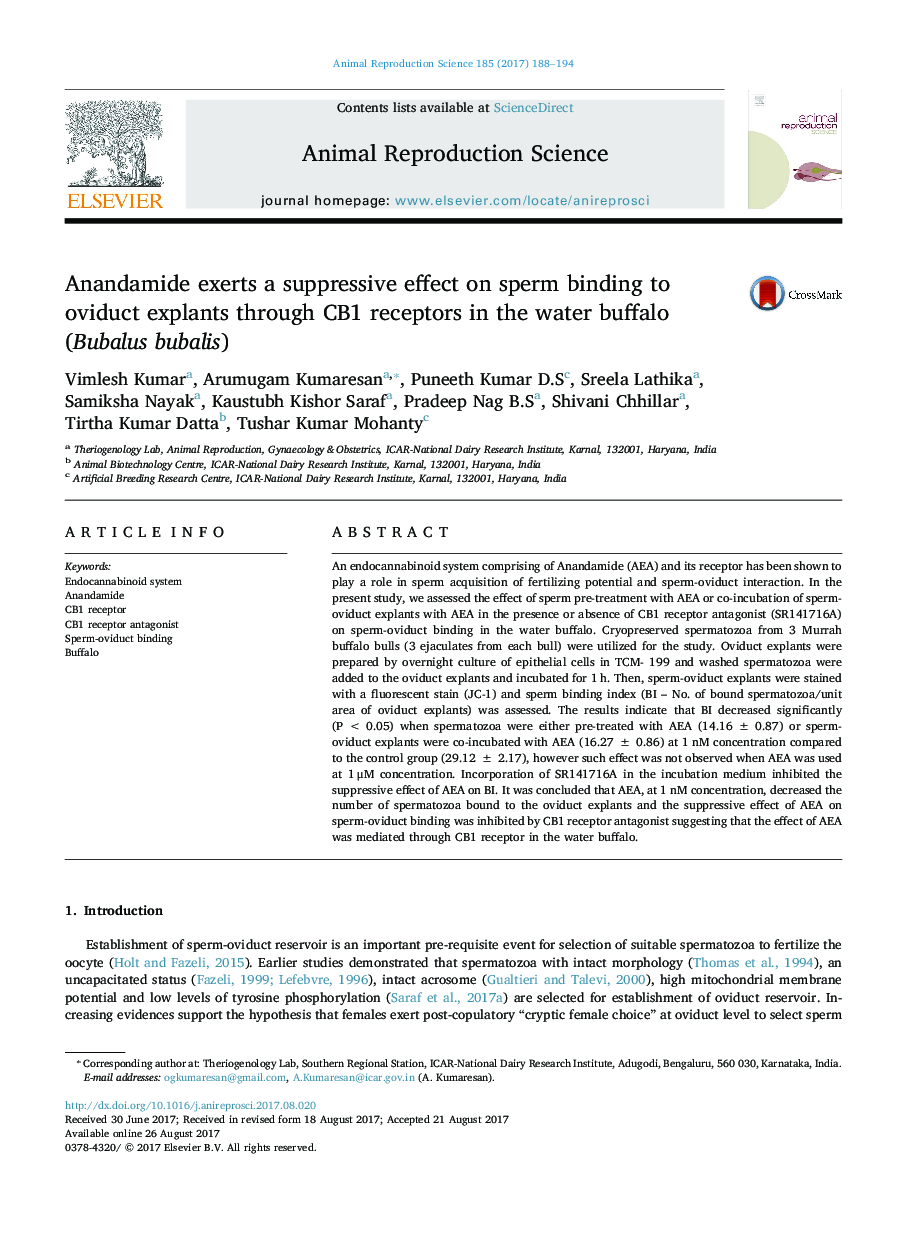| Article ID | Journal | Published Year | Pages | File Type |
|---|---|---|---|---|
| 5520215 | Animal Reproduction Science | 2017 | 7 Pages |
â¢The effect of Anandamide (AEA) and its receptor antagonist on sperm-oviduct binding was studied in the water buffalo.â¢AEA significantly decreased the number of sperm bound to the oviduct explant at 1 nM concentration.â¢At 1 micromolar concentration AEA did not affect the number of sperm bound to the oviduct explant.â¢The effect of AEA on sperm-oviduct binding was mediated through CB1 receptor.â¢CB1 antagonist (SR141716A) reversed the inhibitory effect of AEA on sperm oviduct binding.
An endocannabinoid system comprising of Anandamide (AEA) and its receptor has been shown to play a role in sperm acquisition of fertilizing potential and sperm-oviduct interaction. In the present study, we assessed the effect of sperm pre-treatment with AEA or co-incubation of sperm-oviduct explants with AEA in the presence or absence of CB1 receptor antagonist (SR141716A) on sperm-oviduct binding in the water buffalo. Cryopreserved spermatozoa from 3 Murrah buffalo bulls (3 ejaculates from each bull) were utilized for the study. Oviduct explants were prepared by overnight culture of epithelial cells in TCM- 199 and washed spermatozoa were added to the oviduct explants and incubated for 1 h. Then, sperm-oviduct explants were stained with a fluorescent stain (JC-1) and sperm binding index (BI - No. of bound spermatozoa/unit area of oviduct explants) was assessed. The results indicate that BI decreased significantly (P < 0.05) when spermatozoa were either pre-treated with AEA (14.16 ± 0.87) or sperm-oviduct explants were co-incubated with AEA (16.27 ± 0.86) at 1 nM concentration compared to the control group (29.12 ± 2.17), however such effect was not observed when AEA was used at 1 μM concentration. Incorporation of SR141716A in the incubation medium inhibited the suppressive effect of AEA on BI. It was concluded that AEA, at 1 nM concentration, decreased the number of spermatozoa bound to the oviduct explants and the suppressive effect of AEA on sperm-oviduct binding was inhibited by CB1 receptor antagonist suggesting that the effect of AEA was mediated through CB1 receptor in the water buffalo.
